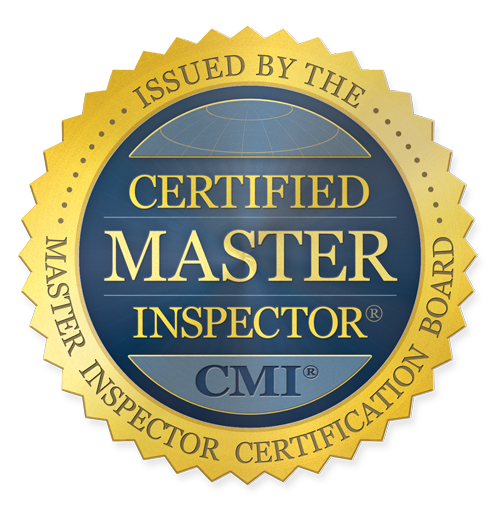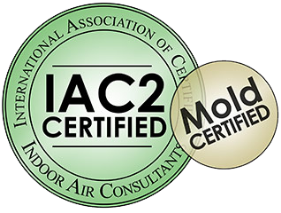A roof inspection reveals an unbelievable amount of information about a home. Yet, within that inspection, home inspectors identify all kinds of current and potential issues that may not have been noticed otherwise.
Roof Inspections: An Essential Part of the 4-Point Home Inspection
Roof inspections are included in both the 4-point and whole-home inspections. However, sometimes, it feels like anything we need to know about the house’s structure is exemplified by the roof.
Homeowners are amazed at what we can tell them solely from our assessment of the roofing structure. A professional roof inspection reveals everything about the roof’s status, such as:
- It’s approximate age (give or take a few years)
- Quality of materials
- Building code compliance
- Errors in installation
- Maintenance history (or lack thereof)
- And so on
6 Things A Roof Inspection Tells Us About Your Home
However, we also learn much more about a home while assessing a roof’s status. Here are six things revealed by the roof portion of a home inspection.
1. Leak Issues
The roof is a building’s first line of defense from environmental elements. Any evidence of historic or continuing leaks is a red flag the house probably has moisture control issues. In worst-case scenarios, long-lasting leaks infiltrate interior wall spaces where structural damage becomes a real-time threat, often unbeknownst to homeowners.
Undetected roof leaks make buildings vulnerable to:
- Humidity and temperature control issues
- Higher energy bills
- Structural rot
- Attic and ceiling damage
- Electrical shorts and malfunctions, including faulty lighting
- Mold and mildew infestations
- Staining
- Sagging drywall
- Water damage to furniture or possessions stored in out-of-the-way or lesser-seen areas of the home (crawl spaces, attics, understair closets, etc.).
2. Lack of Wind Mitigation Features
Here in Florida, wind mitigation features are crucial to a home’s structural integrity and the safety of its occupants. Roof-related wind mitigation features include things like:
- High-quality roofing materials
- Water barriers
- Proper installation without any roof nail pops through waterproofing or roof deck materials.
- Roof-to-wall connections
- Tie-downs for mobile home roofs
Besides improper installation or nail pops, the lack of non-code wind mitigation features doesn’t negatively compromise the inspection. However, the inspection report includes notes and recommendations for making the roof more windproof.
3. Insulation Quality and Quantity
Inspecting a roof means going up into the attic. We see all kinds of interesting things when we’re up there. Roof leaks are only one of them.
Attic insulation is a crucial component of whole-home comfort and energy efficiency. While inspecting the attic side of the roof, we notice if insulation is:
- Missing, damaged, or inadequate in terms of quantity
- Installed correctly and with the correct R-value for our zone
- A home for rodents or other pests
- Showing signs of water damage or singing/burning related to electrical issues.
4. Issues with the HVAC System and Ductwork
Attics typically house HVAC ducts, and some attics house the HVAC system itself. Unless homeowners schedule annual or bi-annual HVAC inspection and maintenance appointments, all kinds of things can go awry.
- The system may be too small for the home
- It may be completely outdated and inefficient
- Ductwork may be cracked, damaged, or separated at the seams
Like insulation or wind mitigation features, HVAC or duct issues don’t negatively affect your roof per se, but we can’t let them go un-noted on an inspection report.
5. Electrical or Plumbing Issues
Just as the attic hides HVAC system parts, it’s also where plumbing and electrical wiring live. If these systems are old, corroded or damaged, or improperly installed, it poses a risk to the structure.
And as you can imagine, issues with electrical and plumbing materials in the attic are a good indicator that similar issues exist inside the home. For example, a house with outdated wiring or pipework in the attic is a sign that other elements:
- Aren’t up to building code standards
- Haven’t been properly maintained
- Are at risk for leaks, shorts, or malfunctions
Also, if we notice electrical wiring issues, it’s almost a sure sign we’ll find red flags in the electrical panel.
6. Mold, Mildew, or Pest issue
The attic is an accommodating host to mold, mildew, and other pests. If the roof leaks, there are guaranteed to be moisture and humidity issues. Where there are moisture and humidity issues, mold and mildew are almost a given. That’s especially true here in Florida, where attics can be hotter and more humid than the outside climate, with plenty of organic materials on the surfaces and insulation for mold to feed on.
Also, the attic’s secure and predator-free environment makes it a first-choice living place for rodents and birds. As a result, home inspection professionals become amateur naturalists, learning to identify many of the area’s most common rodents, bats, and birds.
We also become pretty decent entomologists due to the number of insects we find during the attic portion of roof inspections. While many are easily controlled with organic, earth-friendly insect traps or sprays, others are not so easy to eradicate.
Wood-destroying organisms (WDOs) do more than $500 million dollars of damage every year here in Florida. The sooner you find and destroy them, the stronger and more weather-resistant the building will be.
Since most attics have an abundance of exposed wood, it’s easy to notice signs of WDO infestations in attics, such as:
- Mud tubes
- Tiny holes in the wood
- Small wood dust piles
- Termite dropping
- Audible tapping
- Buckling wood
Sometimes, what at first appears to be water or moisture damage (swollen, buckling, flaking, or rotted wood) turns out to be WDO damage upon closer inspection.
Super Inspection Pros Provide Comprehensive Reports About Your Home
Most of the time, SIP performs roof inspections as part of standard 4-point or insurance inspections. However, we are also happy to perform roof-only inspections for new-to-you home buyers or those who let roof maintenance lapse for longer than they meant to.
A roof inspection reveals all of the above and so much more. Once we’re done, we guarantee a 24-hour turnaround on your roof inspection report, including everything you need to know to make your home safer and more insurable. Contact us to schedule a home inspection ASAP.

